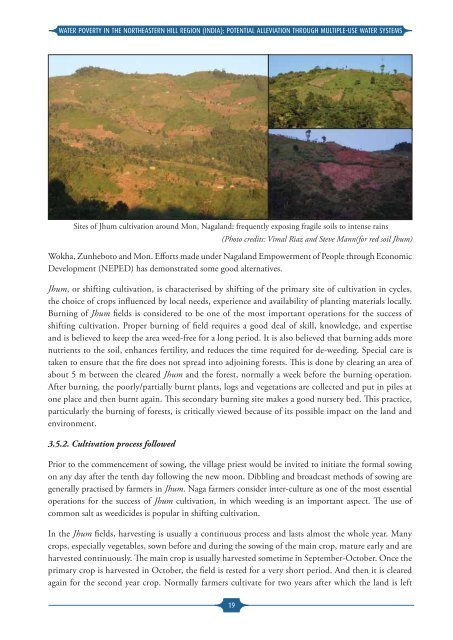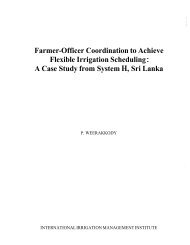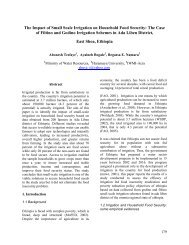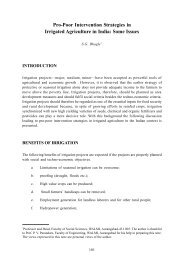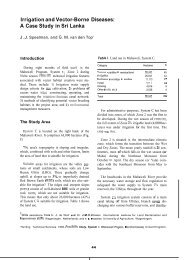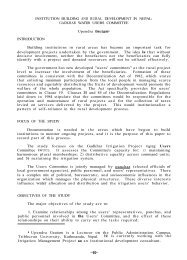WATER POVERTY IN THE NORTHEASTERN HILL REGION (INDIA)
WATER POVERTY IN THE NORTHEASTERN HILL REGION (INDIA)
WATER POVERTY IN THE NORTHEASTERN HILL REGION (INDIA)
You also want an ePaper? Increase the reach of your titles
YUMPU automatically turns print PDFs into web optimized ePapers that Google loves.
<strong>WATER</strong> <strong>POVERTY</strong> <strong>IN</strong> <strong>THE</strong> NOR<strong>THE</strong>ASTERN <strong>HILL</strong> <strong>REGION</strong> (<strong>IN</strong>DIA): POTENTIAL ALLEVIATION THROUGH MULTIPLE-USE <strong>WATER</strong> SYSTEMSSites of Jhum cultivation around Mon, Nagaland: frequently exposing fragile soils to intense rains(Photo credits: Vimal Riaz and Steve Mann(for red soil Jhum)Wokha, Zunheboto and Mon. Efforts made under Nagaland Empowerment of People through EconomicDevelopment (NEPED) has demonstrated some good alternatives.Jhum, or shifting cultivation, is characterised by shifting of the primary site of cultivation in cycles,the choice of crops influenced by local needs, experience and availability of planting materials locally.Burning of Jhum fields is considered to be one of the most important operations for the success ofshifting cultivation. Proper burning of field requires a good deal of skill, knowledge, and expertiseand is believed to keep the area weed-free for a long period. It is also believed that burning adds morenutrients to the soil, enhances fertility, and reduces the time required for de-weeding. Special care istaken to ensure that the fire does not spread into adjoining forests. This is done by clearing an area ofabout 5 m between the cleared Jhum and the forest, normally a week before the burning operation.After burning, the poorly/partially burnt plants, logs and vegetations are collected and put in piles atone place and then burnt again. This secondary burning site makes a good nursery bed. This practice,particularly the burning of forests, is critically viewed because of its possible impact on the land andenvironment.3.5.2. Cultivation process followedPrior to the commencement of sowing, the village priest would be invited to initiate the formal sowingon any day after the tenth day following the new moon. Dibbling and broadcast methods of sowing aregenerally practised by farmers in Jhum. Naga farmers consider inter-culture as one of the most essentialoperations for the success of Jhum cultivation, in which weeding is an important aspect. The use ofcommon salt as weedicides is popular in shifting cultivation.In the Jhum fields, harvesting is usually a continuous process and lasts almost the whole year. Manycrops, especially vegetables, sown before and during the sowing of the main crop, mature early and areharvested continuously. The main crop is usually harvested sometime in September-October. Once theprimary crop is harvested in October, the field is rested for a very short period. And then it is clearedagain for the second year crop. Normally farmers cultivate for two years after which the land is left19


